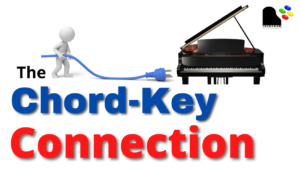 The struggle of reading notes creates a sticking point for aspiring piano players. It's understandable because notes seem to be random. This is especially true if you have a limited understanding of keys of music.
The struggle of reading notes creates a sticking point for aspiring piano players. It's understandable because notes seem to be random. This is especially true if you have a limited understanding of keys of music.
The answer to solving the problem of random notes lies in understanding chords. However, chords are transitory, meaning they're constantly changing throughout a song or piece of music.
Even though chords make an easier task of playing music, there's another perspective of chords that I believe can make music even easier for you to understand. I discovered this many years ago through simple observation. And I must emphasize that it helped to simplify music for me at a different level.
Let's use a simple lead sheet to illustrate this chord/key connection. In case you’re not familiar with lead sheets, they’re a simple manuscript of a song that consists of the melody, lyrics, and chord symbols.
 The key signature is located at the beginning of the lead sheet. It reflects the menu of notes that the song or piece of music consists of. This simply means that most of the notes will be comprised of these 7 notes with the exception of any accidentals (notes that aren’t in the key) which are very few in most popular songs.
The key signature is located at the beginning of the lead sheet. It reflects the menu of notes that the song or piece of music consists of. This simply means that most of the notes will be comprised of these 7 notes with the exception of any accidentals (notes that aren’t in the key) which are very few in most popular songs.

The music is segmented in measures or bars. Each one of these segments can have one or more chord symbols in them although there aren’t usually more than two.

The melody notes are relatively tied to the chord symbols. In other words, these melody notes can be found within the chords as well as those in the key.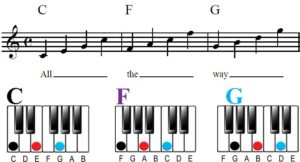
It’s important to recognize that most of the chords of any given song are diatonic. This simply means that they’re comprised of the notes that are in the key. Songs can however have non-diatonic chords. These are chords that are not native to the key the song is in. For example, if a song is in the key of C Major, it may contain an E flat or D Major chord. Both of which are not diatonic chords in the key of C Major.
Songs can however have non-diatonic chords. These are chords that are not native to the key the song is in. For example, if a song is in the key of C Major, it may contain an E flat or D Major chord. Both of which are not diatonic chords in the key of C Major.
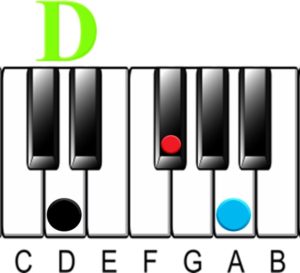
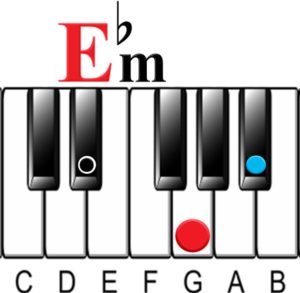
This opens up the possibilities of notes that may appear in the melody. This is due to the fact that the melody can contain the non-diatonic notes that also exist in the non-diatonic chord. But be aware that there are few of them in a piece of music.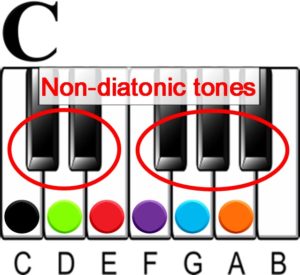 This is where the thought process of the chord/key connection comes in to maintain clarity in the music. It also allows you to see the potential of adding chord extensions or substitutions.
This is where the thought process of the chord/key connection comes in to maintain clarity in the music. It also allows you to see the potential of adding chord extensions or substitutions.
The way in which to proceed through this thought process is to think of each chord symbol as being its own key environment. For example, when a C Major chord is in play, all of the notes of the key of C Major are possibilities to add to the chord or even the melody.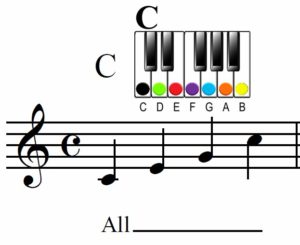 Let’s say the chord transitions to F. Now you’re in the F Major environment. This essentially means that along with the F Major chord, you have the possibilities of all the notes of the key of F Major to add to the chord or melody.
Let’s say the chord transitions to F. Now you’re in the F Major environment. This essentially means that along with the F Major chord, you have the possibilities of all the notes of the key of F Major to add to the chord or melody.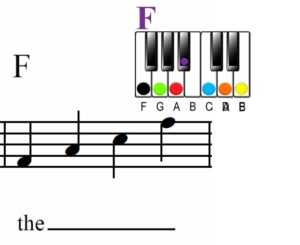
The same applies if the chord transitions to G. You’re now in the G major environment and have those tones as possibilities.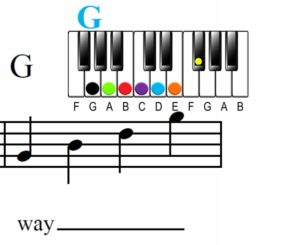 If the B flat Major chord comes into play, the concept still applies even though the song remains in the key of C Major.
If the B flat Major chord comes into play, the concept still applies even though the song remains in the key of C Major.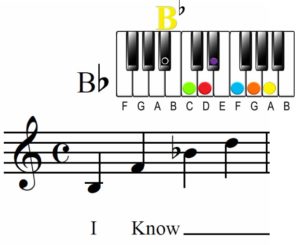 Even if an A minor chord comes into play, the concept still applies even though the song remains in the key of C Major.
Even if an A minor chord comes into play, the concept still applies even though the song remains in the key of C Major.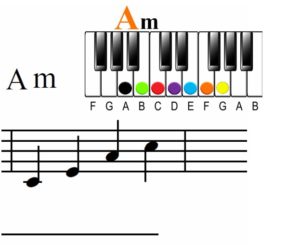
Look at this way. Every time the chord changes so does the key. I don’t mean this literally because the key does not change. But looking at the chord changes this way allows you to “compartmentalize” these sections of a song. It breaks the music down into blocks that makes them easier to play and learn.
Knowing Major and minor keys of music gives you the tools to look at the chord/key relationship this way. So is it necessary to know every Major or minor key to use this concept?
Even though knowing Major and minor keys are a fundamental skill, it’s not necessary to know all of them for any one song. There are only so many chord possibilities that a piece of music may have.
If we take our lead sheet example in the key of C Major, it’s unlikely to have a G flat Major chord come into play. Why? Just compare the key of G flat Major to the key of C Major. They have very few notes in common. With the exception of modulating to a different key, C to G flat would be a very abrupt chord change. Chords must have common tones in order to fit in the same progression.


With that being said, learn your Major and minor keys. Take the time and effort to look at your favorite songs with this chord/key relationship. This opens up your chord and key vocabulary that allows you to play songs in any key.
Until next time, Go Play!
Greg Lee
Latest posts by Greg Lee (see all)
- What is a minor/Major 7 Chord? - October 26, 2023
- 7 Chord Substitutions that Professionals Use - October 19, 2023
- 5 Simple Chord Tricks to Sound Amazing - October 5, 2023



